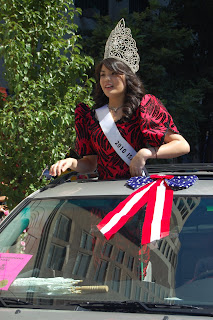
Filipinos here and back home are venting their dismay, distress and in many instances, seething anger over a US group’s decision to stop licensure examinations for physical therapists from the Philippines and three other countries.
“I was so frustrated because my brother is one of those affected,” Michael Lange of Miami, Florida wrote ABS-CBN’s Balitang America.
“Our hopes of seeing my brother in the US is gone,” he said, appealing for help.
The Federation of State Boards of Physical Therapy (FSBPT) suspended last July 11 the National Physical Therapist Examinations (NPTE) for graduates from the Philippines, Egypt, India and Pakistan.
“You can’t stop yourself from thinking they are discriminating against the four countries,” said Eileen Decesare, president of Virginia-based Professional Healthcare Resources.
The Philippines, China and India are the top suppliers of physical therapists in the US.
“Everybody is taking the same test, so why don’t they look at everybody because they are punishing only these four countries,” she averred, adding, “you begin to wonder what is the underlying reason.”
The FSBPT cited a “breach of security” for suspending the NPTE.
Cheating by recall It pointed to “compelling evidence reflecting systematic and methodical sharing and distribution of recalled questions by significant numbers of graduates of programs in the affected countries.”
The FSBPT said their findings came about after “extensive forensic analyses of exam performances”.
They referred to the police raid against the St. Louis Review Center in Manila in 2007, where alleged evidence of an exam leak was found. They concluded the “sale and sharing of recalled test questions extends beyond this single test preparation company.”
Labor Attache Luzviminda Padilla said at the Philippine Embassy in Washington DC, they wanted to meet with FSBPT officials to get to the bottom of the test ban.
“We’re seeking an audience with the Federation so that we can be more clarified on this development and ask about their specific plans. We also want to relay the actions we’re taking on our side to address the issues they have raised,” she explained.
Padilla reveals that her boss in Manila, Labor Secretary Rosalinda Baldoz, has gathered the various agencies, including the National Bureau of Investigation (NBI) to act on the FSBPT’s concerns.
“Hopefully if they see that we are taking strong actions, they might be convinced to reconsider their decision,” she averred.
Running the gauntlet Decesare said suspending the NPTE was tantamount to banning the deployment of Filipino physical therapists in the US as recruitment comes to a screeching halt.
Over 1,300 Filipino PTs were deployed to the US from 2007 to 2009, according to Philippine Labor Department records.
“I have a lot of PTs, almost 80 of them who I recruited in 2004. Last month, immigration (US Citizenship & Immigration Services) was only processing applications for August 2003. The good news is that just in the past weeks, they jumped nine months and are now processing July 2004,” she disclosed.
“But look, we’re now 2010. For those who filed in 2004 onwards, they will have to wait another six years if the Obama administration doesn’t do immigration reforms.”
Decesare, a nurse by profession, established Professional Healthcare Resources in 1994. The company now employs over 800 nurses, PTs and occupational therapists in Washington DC, Maryland and Virginia.
Finding a US employer is just the start of a long, arduous process, she explained.
Filipino PTs have to take an English proficiency exam and fulfill other requirements before they can take the Foreign Credentialing Commission on Physical Therapy (FCCPT) exams.
If they pass, they wait. They can enter the US either with an H-1B or EB-3 visa.
The visa allocation for the Philippines is always oversubscribed which leads to the long queue to work in the US.
Most PTs are willing to wait, Decesare said, intimating that a well-trained, experienced PT can earn as much $100,000 a year in the US.
“Capturing” unused visas for the use of countries like the Philippines is a politically volatile subject, she explained.
She revealed how the US Congress snuck in a rider that realigned 50,000 visas to several countries, including the Philippines, in a 2006 bill to aid victims of the Southeast Asian tsunami.
She said Filipino nurses, PTs and other “in-demand” professionals gobbled up visas intended to last six months in a matter of weeks.
Thus, the backlog grew again. The PTs had to wait upto six years before they can apply for a visitor’s visa at the US Embassy in Manila so they can take the NPTE that is administered only in the US.
Some are turned away, ending their dream of working in America.
Risks and opportunities Those who successfully ran this gauntlet now face an uncertain future. Most visitor’s visa expire in six months. Unable to take the licensure test, Filipino PTs must make a difficult decision.
Many had to borrow money to travel to the US. They could go home to a mountain of debt or they could press their luck, risking arrest and deportation for overstaying, and wait for an opportunity to take the licensure tests when it resumes in late 2011, as promised by the FSBPT.
Decesare said this latest cheating scandal reminds her of the nursing exams controversy in 2006.
A feared ban in the deployment of Filipino nurses to the US was staved off thanks to concerted efforts by government and NGOs like the Philippine Nursing Association (its US chapter is one of the biggest Fil-Am organizations in America).
It led to stringent reforms that not only helped raise test standards and safeguards, but also improved facilities for assessing the eligibility of Filipino nurses.
A year after the nursing controversy erupted, the National Council of State Boards of Nursing (NCSBN) chose Manila as one of the sites to administer the National Council Licensure Examination (NCLEX) for US-bound nurses.
PT credentialing examinations used to be administered in Guam and Saipan.
Decesare expressed the hope that the crisis clouding Filipino PTs would also lead to positive change.
She noted how the nursing field appeared to be more advanced in the credentialing and licensing of foreign-graduate healthcare professionals in the US.
She revealed how the NCSBN, for instance, applies different sets of test questions which they amend and rotate periodically, a practice the FSBPT could have used to neutralize the “sharing of recalled questions”.
Decesare said the PT ban will directly affect the delivery of health care services for elderly Americans.
“You will see in the statistics that a lot of our senior patients are fall risks because they lose their coordination and they fall easily. That job comes under the realm of PTs, to help them strengthen their legs and do exercises to prevent falls,” she said.
“I just came from a homecare conference in Chicago over the weekend and that (shortage of PTs) was a major concern for us because if we can not supply the PTs needed by patients, we can not open the case. The elderly don’t get the care they need. The longer you wait in the hospital, not getting the PT treatment only makes it worse for them,” she warned.




















































